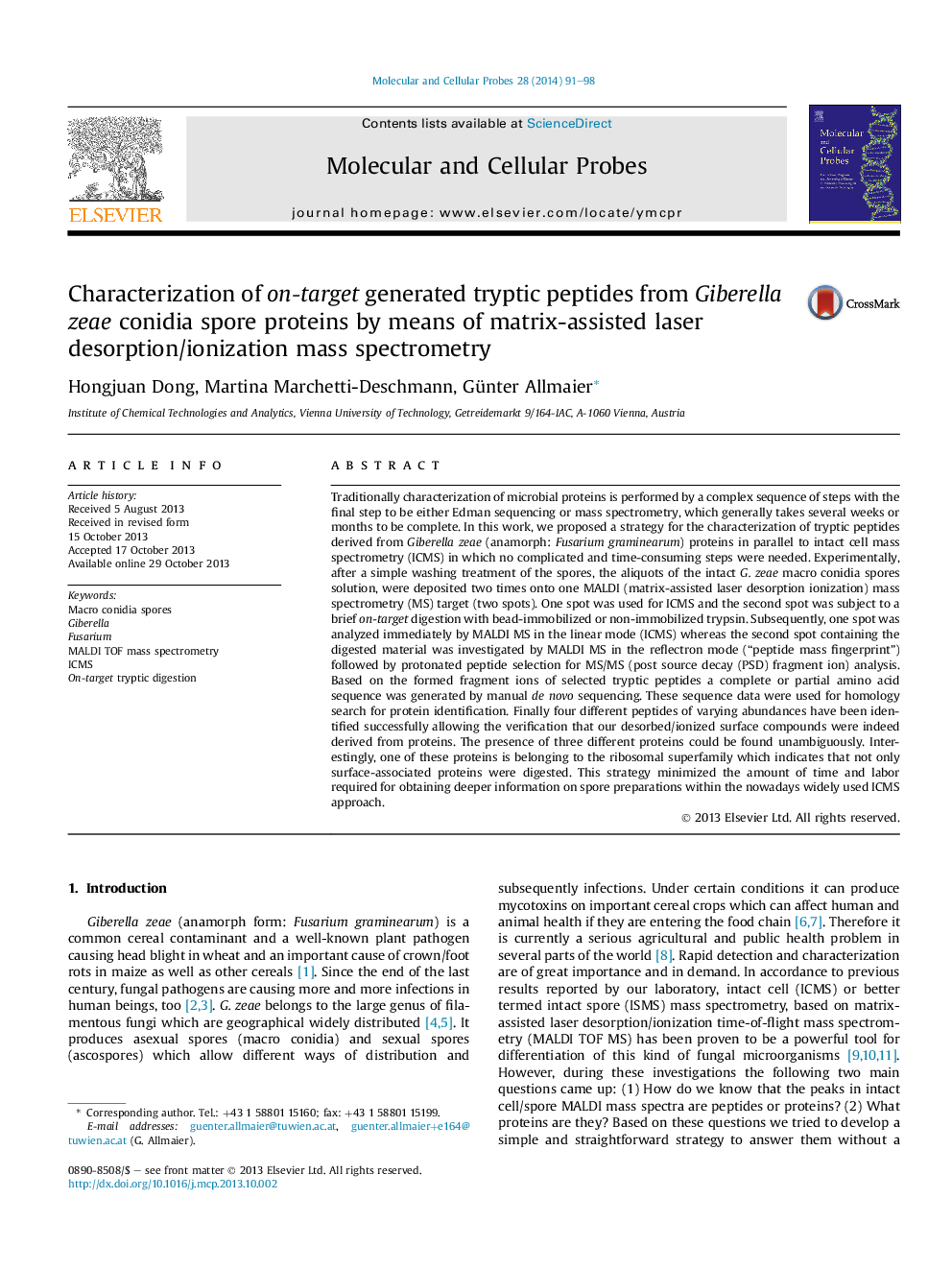| کد مقاله | کد نشریه | سال انتشار | مقاله انگلیسی | نسخه تمام متن |
|---|---|---|---|---|
| 8478805 | 1551175 | 2014 | 8 صفحه PDF | دانلود رایگان |
عنوان انگلیسی مقاله ISI
Characterization of on-target generated tryptic peptides from Giberella zeae conidia spore proteins by means of matrix-assisted laser desorption/ionization mass spectrometry
دانلود مقاله + سفارش ترجمه
دانلود مقاله ISI انگلیسی
رایگان برای ایرانیان
موضوعات مرتبط
علوم زیستی و بیوفناوری
بیوشیمی، ژنتیک و زیست شناسی مولکولی
بیولوژی سلول
پیش نمایش صفحه اول مقاله

چکیده انگلیسی
Traditionally characterization of microbial proteins is performed by a complex sequence of steps with the final step to be either Edman sequencing or mass spectrometry, which generally takes several weeks or months to be complete. In this work, we proposed a strategy for the characterization of tryptic peptides derived from Giberella zeae (anamorph: Fusarium graminearum) proteins in parallel to intact cell mass spectrometry (ICMS) in which no complicated and time-consuming steps were needed. Experimentally, after a simple washing treatment of the spores, the aliquots of the intact G. zeae macro conidia spores solution, were deposited two times onto one MALDI (matrix-assisted laser desorption ionization) mass spectrometry (MS) target (two spots). One spot was used for ICMS and the second spot was subject to a brief on-target digestion with bead-immobilized or non-immobilized trypsin. Subsequently, one spot was analyzed immediately by MALDI MS in the linear mode (ICMS) whereas the second spot containing the digested material was investigated by MALDI MS in the reflectron mode (“peptide mass fingerprint”) followed by protonated peptide selection for MS/MS (post source decay (PSD) fragment ion) analysis. Based on the formed fragment ions of selected tryptic peptides a complete or partial amino acid sequence was generated by manual de novo sequencing. These sequence data were used for homology search for protein identification. Finally four different peptides of varying abundances have been identified successfully allowing the verification that our desorbed/ionized surface compounds were indeed derived from proteins. The presence of three different proteins could be found unambiguously. Interestingly, one of these proteins is belonging to the ribosomal superfamily which indicates that not only surface-associated proteins were digested. This strategy minimized the amount of time and labor required for obtaining deeper information on spore preparations within the nowadays widely used ICMS approach.
ناشر
Database: Elsevier - ScienceDirect (ساینس دایرکت)
Journal: Molecular and Cellular Probes - Volume 28, Issues 2â3, AprilâJune 2014, Pages 91-98
Journal: Molecular and Cellular Probes - Volume 28, Issues 2â3, AprilâJune 2014, Pages 91-98
نویسندگان
Hongjuan Dong, Martina Marchetti-Deschmann, Günter Allmaier,